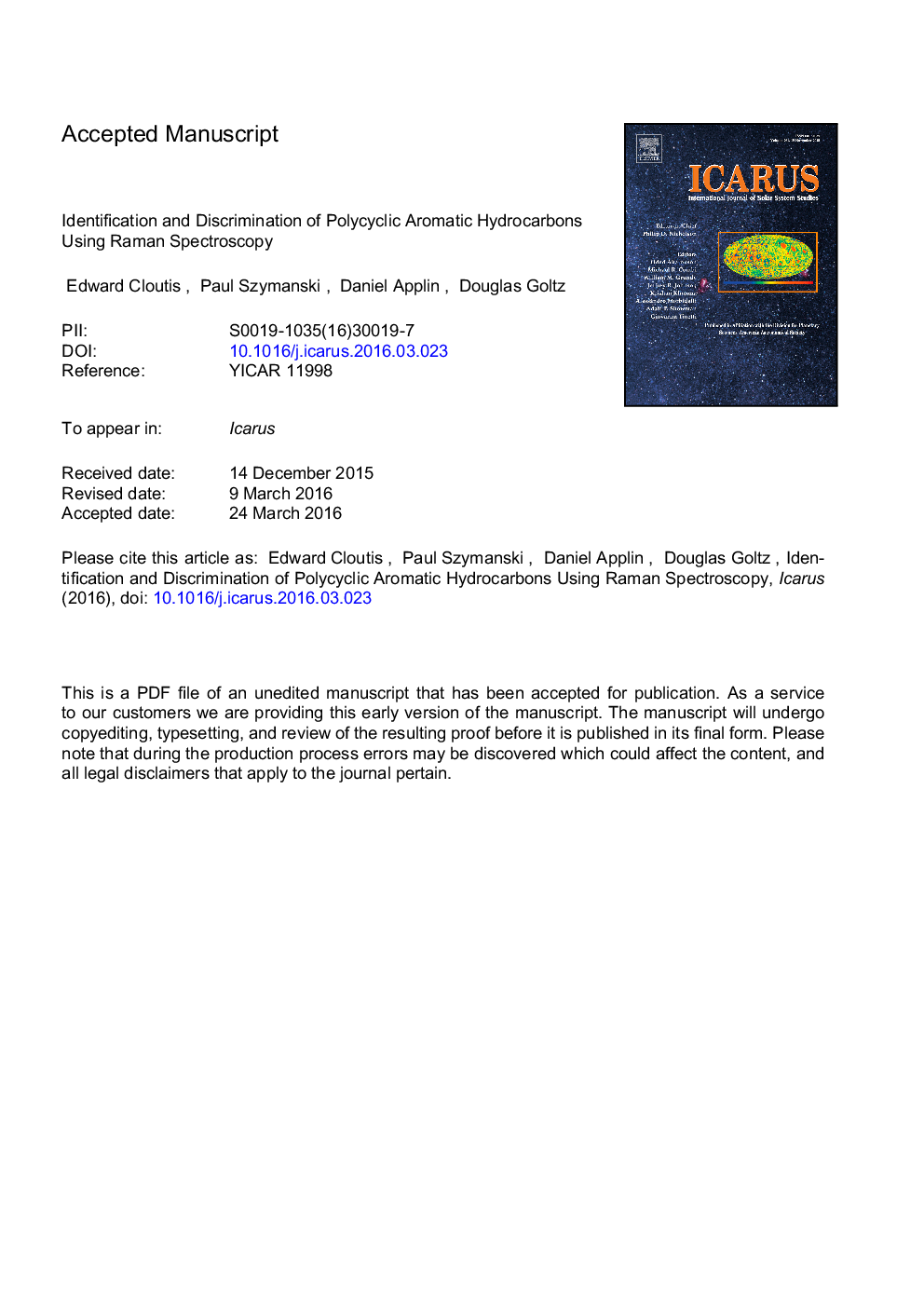| کد مقاله | کد نشریه | سال انتشار | مقاله انگلیسی | نسخه تمام متن |
|---|---|---|---|---|
| 8134970 | 1523516 | 2016 | 79 صفحه PDF | دانلود رایگان |
عنوان انگلیسی مقاله ISI
Identification and discrimination of polycyclic aromatic hydrocarbons using Raman spectroscopy
ترجمه فارسی عنوان
شناسایی و تبعیض از هیدروکربن های آروماتیک چند حلقه ای با استفاده از طیف سنجی رامان
دانلود مقاله + سفارش ترجمه
دانلود مقاله ISI انگلیسی
رایگان برای ایرانیان
کلمات کلیدی
موضوعات مرتبط
مهندسی و علوم پایه
علوم زمین و سیارات
علوم فضا و نجوم
چکیده انگلیسی
Polycyclic aromatic hydrocarbons (PAHs) are widely present throughout the Solar System and beyond. They have been implicated as a contributor to unidentified infrared emission bands in the interstellar medium, comprise a substantial portion of the insoluble organic matter in carbonaceous chondrites, are expected stable components of organic matter on Mars, and are present in a wide range of terrestrial hydrocarbons and as components of biomolecules. However, PAH structures can be very complicated, making their identification challenging. Raman spectroscopy is known to be especially sensitive to the highly polarizable C-C and C=C bonds found in PAHs, and therefore, can be a powerful tool for PAH structural and compositional elucidation. This study examined Raman spectra of 48 different PAHs to determine the degree to which Raman spectroscopy could be used to uniquely identify different species, factors that control the positions of major Raman peaks, the degree to which induced fluorescence affects the intensity of Raman peaks, its usefulness for PAH discrimination, and the effects of varying excitation wavelength on some PAH Raman spectra. It was found that the arrangement and composition of phenyl (benzene) rings, and the type and position of functional groups can greatly affect fluorescence, positions and intensities of Raman peaks associated with the PAH backbone, and the introduction of new Raman peaks. Among the functional groups found on many of the PAHs that were analyzed, only a few Raman peaks corresponding to the molecular vibrations of these groups could be clearly distinguished. Comparison of the PAH Raman spectra that were acquired with both 532 and 785Â nm excitation found that the longer wavelength resulted in reduced fluorescence, consistent with previous studies.
ناشر
Database: Elsevier - ScienceDirect (ساینس دایرکت)
Journal: Icarus - Volume 274, August 2016, Pages 211-230
Journal: Icarus - Volume 274, August 2016, Pages 211-230
نویسندگان
Edward Cloutis, Paul Szymanski, Daniel Applin, Douglas Goltz,
